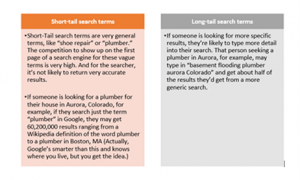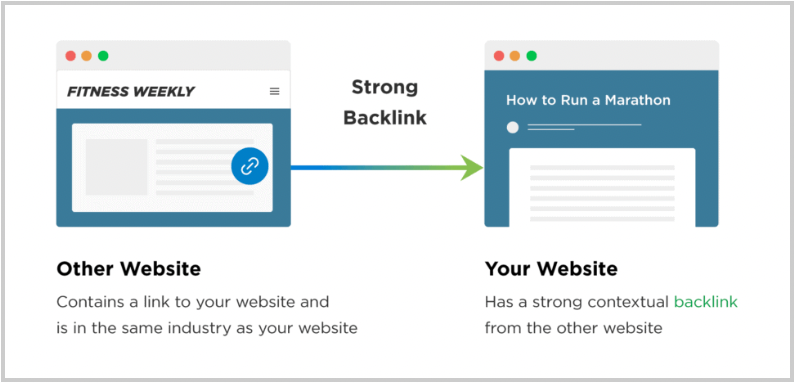Module 2: Readings and Videos Part I

Overview
Last module, you learned how technology and the Internet have impacted marketing and consumer behavior, and you learned best practices for designing websites and analyzing the effectiveness of websites. It is time to learn how to use analytics to measure whether the business and marketing goals are being met. This week, we will also discuss using search engine optimization and search engine marketing to get found on the internet. You will learn how to optimize your website for search engine ranking.
Module Objectives
Upon completion of this module, you should be able to:
- Choose the best key performance indicators for a given website.
- Suggest improvements for an eCommerce website based on an analysis of metrics and analytics.
- Research and discover keywords that would be most worthwhile for a website to target in its search engine optimization efforts.
- Improve a webpage’s relevance for a target keyword by suggesting specific changes to the webpage.
- Identify possible technical issues that could be impeding a website’s rankings.
- Describe the distinct types of links found on a webpage.
- Determine the weaknesses in a website’s link profile that is preventing it from ranking well on relevant searches.
- Create and implement a plan to earn high-quality links from external sources to improve a website’s search engine rankings on relevant searches.
Tracking Website Analytics
The best way to track the success of your company’s website is to use web analytics. Through web analytics, you can measure everything from what pages people stayed on longest, where they came to your site from (i.e., did they type in your URL directly, find you from a search, or click on a link from a referring source?), and where your visitors are located. You can track conversions, if you have an ecommerce site, and you can get an idea of what content draws people to your site.
The following introduction to web analytics video featuring Zach Olsen from Columbia Sportswear Company provides a 28-minute overview of website analytics.
As with social media, it is important to track your search engine marketing activities to gauge success and progression. The best tool for tracking search metrics and analytics is Google Analytics. Google Analytics is a free tool that gives you the ability to track everything from website hits to demographics of your visitors to conversions and traffic sources.
To learn more about Google Analytics specifically, you can explore their YouTube channel here: Getting Started with Google Analytics or read about it here: Google Marketing Platform
Watch the following video for a 1-hour instruction on using Google Analytics with case studies.
Additional Resources: Analytics Training and Support

Search Engine Marketing (SEM)
Search engine marketing is the method of drawing prospects to your website through use of search engines. This could be through paid advertising on search engines or achieving high organic search engine results. We will discuss paid advertising later in the course, but this week, we will focus on search engine optimization, which is how you get your website to rank high on search results.
Search Engine Optimization Overview
The following short video gives a basic overview of why SEO is important. It is a nice little summary, but please ignore the sales pitch at the end.
The best way to be found online is through a search engine, so organic SEO is vital for companies whose audiences search for them online. As an analogy to understand search engine optimization, think about your website as a book (one of many in the world) and search engines as the library.
When you do a search—whether it is on Google, Bing, or YouTube—you are asking the library if they have the book you want. The librarian (search engine) checks the catalogue to see if they have the book in stock and where that book is located on the shelves. The librarian then checks to see if the book is appropriate. Is the title applicable? Is the content what you were really looking for? Is the book in decent shape? Are there reviews from other authors or experts? Are people talking about your book?
Let us take our analogy a little further. These are the main elements of your website that search engines consider when they crawl and index How Google Search Organizes Information

- The title of your book is your website’s title. This is one of the first things search engines look at. Does it have the keywords or phrases that people are searching for? Is it obvious what your website’s about? Are the titles on each page clear and easy to understand?
- Your meta tags: meta tags and attributes give more specific information about your website. Think of these as the description of your book provided on the back of a paperback or inside the book jacket.
- Your sitemap (Learn about sitemaps) is the table of contents. Is the outline clear and organized? Is it easy to skim? Is it easy to navigate?
- The menu links are the chapters in your book. Is it easy to navigate? Do the “chapters” reflect the search terms? Are there any broken links?
- Your content is the text of the book. Does it provide answers to the search terms? Is it valuable and relevant? Is it up to date or copyrighted 1994? Is the content something a reader would be interested in, or is it a dull snooze fest?
- Your website design and appearance are the shape that your book is in. Are the pages torn? Is it outdated and clunky to use? In 2014, the number of users accessing the Internet via mobile device surpassed the number using a computer. Is your site mobile friendly to meet this current need?
- Do you have backlinks to your website? These are links from someone else’s website to yours. These tell the librarian (search engine) that your book is relevant and respected. It also tells the librarian (search engine) that your page is popular, and that people will be interested.
- Does your website have testimonials? Think of these as the glowing praise provided in many books by other authors or experts in the field. People trust others’ opinions. Do you provide them for your potential “readers?”
Search Engine Optimization Details
Keyword Research
In the above library metaphor, you saw the words keyword and keyword phrase used a few times. Keywords are what someone types into a search box when they want to look something up. There are two types of keyword phrases:

(Source: https://images.app.goo.gl/puXiqfGPWQmtZq9c9)
The reason this is important from a digital marketing perspective is that it is quite a bit easier to get to the top of a search if the search is specific than if it is something vague.
Your content-rich website needs to use the right keywords thoughtfully and logically. It is not enough to just scatter keywords all over. Search engines can see through that and will downgrade your rank because of it. But if you use the right keywords in the right way, your SEO will improve. The trick is knowing what terms your audience is searching for in the first place.
There are several apps you can use to help you discover what keywords and keyword phrases your target market is using to find your products or services. Some good ones are:
- Google AdWords Keyword Planner
- Wordtracker.com
Backlinks
As mentioned above, one method Google uses to gauge a website’s relevance and credibility is from the number and quality of backlinks, which are links from external websites to yours. Google creates a link profile for each website that includes:
- Total number of links – provides information about the overall popularity of the site
- Link sources – where the links are coming from provides information about the kinds of sites that find this website valuable, how diverse those linking sites are (which indicates the breadth of appeal of the website), concentration of linking sources (whether most links come from the same site or same kind of site)
- Linked-to pages – Whether all links go to the homepage or links go to a variety of pages within the website tells a vastly different story about the popularity of the website and the website’s content.
- Link timing – When the links came in provides information about the website’s activity level.

In addition to the link profile, Google ranks websites based on their popularity, which they glean from a variety of metrics, including the number of backlinks to the website, how related or relevant the websites are that backlink, the anchor text used in the backlink, link neighborhood, link freshness, link diversity, and social sharing. Here are a couple videos that supplement that information.
- John Locke of Lockedown Industrial SEO Tips Daily, “Link Diversity and Placement Affects SEO” – Link Diversity and Placement Affects SEO
- Kieran D of SEO Rank Specialist YouTube Channel, “What is Link Diversity? | SEO Rank Specialist” – What is Link Diversity? | SEO Rank Specialist (This one is a little silly, and it includes a sales pitch at the end, which is annoying, but the information is helpful. Besides, who does not need to watch a Muppet video somewhere in their online class?)
Content that Ranks
Moz.com is an industry-recognized expert in search engine optimization and a great resource for you in both this class and in your future career. Moz keeps up to date with every change in Google algorithms and translates that into layperson terms for the not-as-savvy SEO marketer. In this blog post, “The 10 Types of Content that Work Best for SEO,” Rand Fishkin provides an excellent overview of content that helps a website’s search engine results.
The 10 Types of Content That Work Best for SEO
We will be exploring content marketing in depth during week 4 of this course.
Linkbait
First, please understand that Linkbait is not the same as clickbait.
Rather, linkbait is valuable content on your website that other websites will naturally reference/link to it without you ever having to ask. It is one method of attracting backlinks to your site organically. Linkable content can be anything from an in-depth research project to an evergreen guide to a popular video. Here is some additional information on Linkbait from Moz.com: What is Link Bait? 10 Examples of Effective Link Bait

